Fjellskikjøring er fantastisk, men det medfører ansvar. I motsetning til skikjøring i anlegg, er fjellet et felles, villt område hvor handlingene dine påvirker andre, naturen og din egen sikkerhet. Her er greia: følg disse enkle reglene for å holde opplevelsen trygg og hyggelig for alle samtidig som du beskytter miljøet.
Raske tips:
- Del løypa: Hold til høyre, vike når det trengs, og kommuniser med andre.
- Respekter naturen: Ta med alt søppel, hold deg til stiene, og unngå å forstyrre dyrelivet.
- Vær skredklar: Ta et sikkerhetskurs, ha med riktig utstyr, og lær hvordan du bruker det.
- Parkering er viktig: Bruk oppmerkede plasser, ikke sperr adkomst, og hold støynivået nede.
- Utstyrsvalg: Kompakt, lettere utstyr (som 100 cm ski) kan gjøre turen tryggere og mindre belastende.
Ved å følge disse grunnleggende reglene hjelper du til med å bevare fjellet for alle samtidig som du har det gøy ute. La oss gå nærmere inn på detaljene!
Tips og etikette for fjellområder: Kjør på!
Løypedeling og grupperegler
Fjellområder samler skiløpere, snowboardere og truger, og skaper et felles rom som handler om samarbeid. I motsetning til de tydelig delte løypene på skianlegg, krever disse naturlige stiene konstant oppmerksomhet og en god dose gjensidig respekt. Alle har ulik fart og utstyr, så det er viktig å være oppmerksom på andre.
Hvordan respektere andre løypebrukere
Hold deg til høyre side av løypa, akkurat som du ville gjort på en vei. Dette sørger for jevn trafikkflyt. Når du møter andre i løypa, avhenger vikeplikten av situasjonen. De som går oppover bør vike for raskere nedoverkjørende, men i trangere områder er det ofte enklere for oppoverkjørerne å vike siden de kan stoppe lettere. Hvis du kjører nedover, hold farten under kontroll og vis hensyn til alle rundt deg.
Hold trygg avstand - ingen liker en som henger på halen, eller som noen kaller det, "ass-camping." La nok plass mellom grupper og gå av stien når du trenger en pause eller vil justere utstyret. Dette holder stien klar og trygg for alle.
Ditt valg av utstyr kan også spille en rolle i hvor godt du deler stien. Tradisjonelle turski, som er rundt 170–190 cm lange, trenger mer plass å manøvrere på, spesielt på smale stier. På den annen side gjør kompakte alternativer som Snowfeet* 100 cm Walkski det enklere å gå raskt til siden og navigere trange steder uten å bremse trafikken.
Hvis du møter snøscootere, gå av stien for å slippe dem forbi. Og enten det er et nikk, en vink eller et raskt rop, går klar kommunikasjon langt for å holde ting i gang smidig.
Hvordan kommunisere med medskiløpere
God kommunikasjon er nøkkelen til å unngå ulykker og gjøre opplevelsen hyggelig for alle. Gi beskjed før du gjør bevegelser som kan påvirke andre. Enkle fraser som "passerer på venstre" eller "kommer gjennom" lar folk vite hva de kan forvente.
Det er like viktig å advare andre om potensielle farer. Hvis du ser isete flekker, skjulte steiner, snøskredrester eller ustabil snø, gi beskjed til gruppen slik at alle kan justere ruten og holde seg trygge.
Når roping ikke er et alternativ - takket være vind eller avstand - kan håndsignaler fylle gapet. Pek i retningen du skal eller bruk en lukket neve for å signalisere stopp. Disse små gestene kan gjøre en stor forskjell.
Den smidige designen til Snowfeet* ski gjør det også enklere å reagere raskt og tilpasse seg gruppedynamikken, noe som hjelper alle å holde seg koordinerte og trygge der ute.
Hvordan redusere påvirkningen din på naturen
Villmarken er en skatt, uberørt og vakker, og det er opp til oss å bevare den slik. Hvert valg du tar - enten det er hvor du trår eller hvilket utstyr du tar med - påvirker disse ville områdene. Å være bevisst på påvirkningen din er ikke bare høflig; det er hvordan vi sikrer at fremtidige generasjoner kan nyte de samme uberørte landskapene. I tillegg kan disse vanene gjøre eventyrene dine tryggere og mer morsomme.
Regler for å ikke etterlate spor
Ta med deg alt du tar med inn - alt. Det betyr innpakninger, fruktskall, papirservietter - alt. Selv biologisk nedbrytbare ting kan forstyrre dyrelivet eller ta år å brytes ned i kalde fjellklima.
Hold deg til etablerte ruter når du kan. Å gå utenfor stien kan virke ufarlig, men det kan skade skjøre alpine planter som tar tiår å komme seg. Hvis du må gå utenfor stien, spre gruppen for å unngå å lage en slitt sti, spesielt i sårbare områder som enger eller nær trebrønner.
Respekter dyrelivets sesongbehov. Villmarksområder er ofte viktige vinterhabitater for dyr som elg, hjort og fjellgeiter. Følg med på sesongstenginger og unngå dyrepassasjer, selv om de virker fristende.
Utstyret ditt kan også bidra til å minimere påvirkningen. For eksempel kan tradisjonelle alpine turski (vanligvis 170–190 cm) lage dype spor som komprimerer snøen og forstyrrer vegetasjonen under. Kortere ski, som Snowfeet* Walkski Backcountry Touring Skis (bare 100 cm), fordeler vekten jevnere, reduserer jordkomprimering og beskytter plantene under snøen.
Vær oppmerksom på hvor du tar pauser. Når du stopper for å hvile, hold deg minst 60 meter unna vannkilder, stier og leirplasser. Dette hjelper til med å beskytte vannkvaliteten og forhindre skade på nærliggende vegetasjon.
Velge miljøvennlig utstyr
Utstyret du bruker kan også gjøre en stor forskjell. Slik tar du smartere, grønnere valg:
- Velg kompakt utstyr. Tradisjonelle ski krever ofte takstativer og større kjøretøy, som bruker mer drivstoff. Snowfeet* ski, derimot, får lett plass i en ryggsekk eller bagasjerom, noe som reduserer karbonavtrykket ditt.
- Velg holdbarhet. Lange ski kan virke robuste, men lengden gjør dem mer utsatt for skader fra steiner eller andre hindringer. Kortere ski, som Snowfeet*, er mindre sannsynlig å hekte seg fast i rusk, noe som betyr at de varer lenger og skaper mindre avfall.
- Velg allsidighet. I stedet for å kjøpe flere oppsett for ulike forhold, se etter utstyr som fungerer på flere typer terreng. Snowfeet* ski, for eksempel, takler både preparerte løyper og pudder, så du trenger ikke et eget oppsett for hver type snø.
- Tenk på slutten av utstyrets levetid. Kompakte ski bruker færre råmaterialer å lage og er enklere å pakke og sende, noe som reduserer deres totale miljøavtrykk.
- Støtt selskaper som bryr seg. Se etter merker som prioriterer lokal produksjon og bærekraftig innkjøp. Kortere forsyningskjeder og miljøbevisste produksjonsmetoder reduserer utslipp og hjelper til med å beskytte planeten.
Regler for oppover- og nedoverski
Å navigere i villmarken handler om balanse – både på skiene og i hvordan du samhandler med andre. En jevn flyt mellom oppover- og nedovergrupper handler ikke bare om høflighet; det handler om å holde alle trygge. Disse uskrevne reglene hjelper til med å sikre at alle kan nyte tiden i fjellet uten unødvendige risikoer eller frustrasjoner.
Regler for skinnespor
Motgående skiløpere har forkjørsrett. Hvis du står på ski nedover og møter noen som går oppover, trå til side eller stopp for å la dem passere. Å gå oppover på ski er hardt arbeid, og å holde rytmen deres intakt er både høflig og praktisk.
Hold deg til etablerte skinneløyper. Hvis noen allerede har laget en sti opp bakken, bruk den. Å lage flere spor skader ikke bare terrenget, men gjør det også rotete for alle som følger.
Del på arbeidet med å bryte løype. Å lede gjennom urørt snø er utmattende, så ta på deg runder i gruppen. Bytt hver 15–20 minutter – eller tidligere hvis lederen blir tregere – for å holde alle friske og opprettholde et jevnt tempo.
Beskytt kick-sving-plattformene. Når løypa svinger tilbake, lager lederen ofte et bredere område for sving. Ikke kjør gjennom disse stedene eller pakk dem ned – de er essensielle for sikre og effektive svinger.
La raskere grupper passere trygt. Hvis du hører en gruppe nærme seg bakfra, flytt deg til et stabilt, bredt parti av sporet for å slippe dem forbi. Unngå å stoppe i trange eller bratte områder hvor forbikjøring kan være farlig.
Lange ski kan være vanskelige i trange svinger, men kortere ski som Snowfeet* 100 cm-modeller gjør det mye enklere å navigere smale spor. Deres kompakte størrelse tillater raskere kick-svinger og jevnere vike for andre.
Sikre nedkjøringer og linjeregler
Når du har mestret oppoveretiketten, er det på tide å bruke samme omsorg på vei ned.
Vent til bakken er klar før du starter nedkjøringen. Sørg alltid for at skiløperen foran deg er helt ute av din tiltenkte vei. I skredutsatt terreng bør bare én person kjøre en skredløype om gangen.
Respekter førstespor. Hvis en gruppe har brukt tid på å bryte løype for å komme til en bakke, er det høflig å la dem nyte den første nedkjøringen. Hvis du vil bli med, spør først i stedet for å kutte inn uanmeldt.
Kommuniser linjen din før du kjører. Snakk med gruppen din om hvem som skal kjøre hvor. Pek ut viktige elementer som steiner, trær eller terrengendringer som kan påvirke ruten din.
Tilpass terrenget til dine ferdigheter. Ikke la stolthet presse deg til å kjøre en linje du ikke er klar for. Hvis du sliter med å kontrollere farten eller koble svinger, velg en mer håndterbar rute – det er bedre for deg og alle andre.
Advar andre om farer. Hvis det er is, steiner eller ustabil snø foran, gi beskjed til gruppen din slik at de kan justere nedkjøringen deretter.
Kortere ski, som Snowfeet* modeller, skinner under nedkjøringer. Deres smidighet gjør raske svinger enklere, noe som hjelper deg å unngå hindringer og navigere bratt eller variert terreng med selvtillit. Tradisjonelle lange ski trenger ofte mer plass og tid for lignende manøvrer.
Samle dere på sikre steder. Ikke stopp midt i bratte bakker eller trange områder hvor du er i den direkte falllinjen. Samle dere heller på siden av løypene, bak naturlige barrierer som steiner eller trær, eller på flate partier.
Følg lokale retningslinjer og skikker. Mange fjellområder har spesifikke regler om prioritet i bakken, spesielt under perioder med høy skredfare. Hvis du er usikker, spør lokale eksperter eller erfarne skiløpere om beste praksis i området.
Å balansere oppover- og nedoveretikette holder ikke bare alle trygge, men sikrer også en mer hyggelig opplevelse. Kombinert med miljøvennlig og smidig utstyr som Snowfeet* Walkski, er det en flott måte å omfavne ansvarlig topptur.
sbb-itb-17ade95
Sikkerhet og beredskap i fjellet
Når det gjelder topptur på ski, er sikkerhet ikke bare en sjekkliste – det er grunnlaget for hver tur. I motsetning til alpinanlegg, hvor skredpatrulje og etablerte sikkerhetstiltak har ryggen din, legger fjellet ansvaret fullt og helt på deg og gruppen din. Det betyr at utstyret, ferdighetene og planleggingen din kan være forskjellen på et episk eventyr og en farlig situasjon.
Fjellet er uforutsigbart. Været kan snu på et øyeblikk, snøforhold kan endre seg, og skjulte farer kan overraske deg. Snøskred er en veldig reell trussel, så å ha riktig utstyr og vite hvordan du bruker det er ufravikelig.
Skredbevissthet og opplæring
Før du i det hele tatt tenker på å dra ut i fjellet, meld deg på et skredkurs. Disse kursene lærer deg å oppdage farer, ta smarte beslutninger i krevende terreng, og håndtere redningssituasjoner. Det er kunnskap som kan redde liv.
Din snøskredsikkerhetspakke bør inneholde tre essensielle ting: en skredsøker, en søkestang og en spade. Men det å eie utstyret er ikke nok – du og gruppen din må øve på å bruke det jevnlig. Sjekk også den lokale skredvarslingen før du drar. Å kjenne forholdene kan hjelpe deg å planlegge smartere og holde deg tryggere.
Kompakt utstyr som Snowfeet* Walkski kan hjelpe deg med å frigjøre plass i sekken til andre nødvendigheter, som nødly eller ekstra lag med klær. Det handler om å være forberedt på det uventede.
Terrenglesing er en annen kritisk ferdighet. Lær å oppdage områder utsatt for snøskred og forstå grunnleggende redningsteknikker slik at du kan handle raskt hvis noe går galt.
Gruppesikkerhet og kommunikasjon
Topptur på ski er ikke en solosport. Gå alltid i gruppe, og sørg for at dere passer på hverandre underveis. Lagarbeid er ikke bare hyggelig å ha – det er essensielt.
Før du drar ut, del reiseinformasjonen din med noen som blir igjen. Inkluder planlagt rute, estimert returtid og nødnumre. Innen gruppen, etabler klare kommunikasjonsprotokoller. Utpek en leder, bli enige om håndsignaler for når det er for vindfullt eller bråkete til å snakke, og bestem en plan for å holde sammen.
Hold deg nær nok til å opprettholde visuell eller verbal kontakt. Utstyr gruppen din med pålitelige kommunikasjonsverktøy, som personlige nødsendere eller satellittkommunikatorer, spesielt siden mobildekning ofte er fraværende i avsidesliggende områder.
Gå gjennom nødsscenarier som et team slik at alle vet hva de skal gjøre hvis noe går galt. Ha med et godt utstyrt førstehjelpssett, og sørg for at alle vet hvordan det brukes. Å følge med på hverandres tilstand gjennom dagen kan hjelpe med å oppdage problemer før de eskalerer.
I villmarken er forberedelse og lagarbeid ikke bare gode ideer – de er det som holder deg trygg.
Parkering, stiadgang og lokale regler
Ditt friluftseventyr starter på parkeringsplassen ved startpunktet, og hvordan du håndterer dette første steget setter tonen for en trygg og respektfull tur. Å parkere ansvarlig og følge lokale regler sørger ikke bare for at alt går smidig, men hjelper også med å opprettholde tilgang for alle.
Parkeringsregler
Tenk fremover når du parkerer. På travle pudderdager kan parkeringsplassen ved startpunktet fylle seg raskt. Hold deg til oppmerkede plasser, selv om det betyr en lengre gåtur. Å ignorere disse områdene eller presse seg inn i ikke-parkeringssoner kan føre til konflikter og til og med restriksjoner på fremtidig tilgang.
Blokker ikke adgangen. Sørg for at bilen din ikke hindrer nødveier eller tar opp mer enn én plass. Nødvendige kjøretøy trenger frie veier til startpunktet, og å blokkere dem kan få alvorlige konsekvenser.
Hvis du bruker kompakt utstyr som Snowfeet* Walkski-ski (bare 39 tommer lange sammenlignet med vanlige 170–180 cm turski), blir pakking og parkering på trangere steder litt enklere.
Sikre kjøretøyet ditt. Innbrudd ved startpunktet er en reell bekymring. Lås bilen, hold verdisaker ute av syne, og ta alltid med nøklene dine. Å miste dem i villmarken kan raskt gjøre dagen til et logistisk mareritt.
Hold støynivået nede om morgenen. Tidlige starter er vanlig for friluftsløpere som jakter på de beste snøforholdene. Hvis du parkerer nær boligområder, vis hensyn. Litt stillhet går langt for å holde lokalsamfunnene fornøyde.
Når du har parkert ansvarlig, dobbeltsjekk de oppsatte reglene for å sikre at du følger alle lokale forskrifter.
Sjekke lokale regler og restriksjoner
Gjør leksene dine. Hvert friluftsområde har sine egne regler, og å hoppe over dette steget kan bety bøter eller til og med tap av tilgang. Forskrifter kan inkludere krav om tillatelser, sesongstengninger eller utstyrsstandarder. I mange nasjonalparker eller villmarksområder er tillatelser obligatoriske og krever ofte planlegging på forhånd og en avgift per person.
Se opp for sesongbaserte stengninger. Vinteren er en sårbar tid for dyrelivet, og mange områder håndhever stengninger for å beskytte dem. Å bryte disse reglene kan føre til bøter og, enda verre, langvarige restriksjoner for alle.
Vær klar over hvem som har ansvaret. Regler for arealforvaltning varierer avhengig av om du er i en nasjonalskog, nasjonalpark, statlig park eller på privat grunn. Det som er tillatt ett sted kan være forbudt bare noen kilometer unna, så det er verdt å forstå detaljene før du drar ut.
Sjekk regler for kjæledyr. Hvis du tar med hunden din, sørg for at du kjenner til eventuelle restriksjoner. Noen områder krever båndtvang, håndhever sesongforbud, eller tillater ikke hunder i det hele tatt. Hvis hunder er tillatt, bør de alltid være under kontroll for å unngå å forstyrre dyrelivet eller andre skiløpere.
Hold deg oppdatert. Forhold og regler kan endre seg raskt på grunn av vær, dyrelivsaktivitet eller andre faktorer. For siste nytt, sjekk offisielle nettsider, stikk innom fjellvokterstasjoner, eller spør i lokale skibutikker. Mange steder tilbyr også sanntidsoppdateringer via sosiale medier eller apper, så følg med på dem også.
Konklusjon: Å praktisere ansvarlig skitouring
Ansvarlig skitouring koker ned til tre nøkkelideer: å respektere andre, beskytte naturen, og holde seg trygg. Når du følger riktig løypeetikette, kommuniserer åpent med andre skiløpere, og bruker etablerte skinnespor, bidrar du til å skape en positiv og inkluderende fjellopplevelse. I tillegg er snøskredopplæring og gode gruppesikkerhetsrutiner ikke bare smart – de er livredderne som sikrer at disse ville områdene kan nytes i mange år fremover.
Utstyret du tar med deg betyr også mye. Tradisjonelle ski, som varierer fra 67 til 71 tommer, kan etterlate bredere spor, ta opp mer lagringsplass, og gjøre tilnærminger lengre. På den annen side tilbyr Snowfeet* Walkski Backcountry Touring Skis, på bare 39 tommer, et mer kompakt alternativ. De er snillere mot miljøet, hjelper deg å manøvrere gjennom tette trelinjer, og passer fint i en standard ryggsekk. Å velge utstyr som dette, kombinert med en respektfull holdning, binder alt sammen for ansvarlig skitouring.
En annen fordel? Deres kompakte størrelse gjør dem perfekte ved overfylte løypeutganger. Du kan parkere lenger unna, redusere trengsel, og vise omtanke for andre – en liten, men meningsfull gest som reflekterer ansvarlig fjellturadferd.
Til syvende og sist vil valgene dine i dag forme fremtiden for tilgang til fjellet. Ved å følge oppoverprotokoller, ta med alt søppel ut, respektere dyrelivsområder med stengninger, og samarbeide med grunneiere, hjelper du til med å bevare disse fellesområdene. Når hver skiløper gjør sin del – enten det er å respektere løypeetikette, velge miljøvennlig utstyr, eller følge lokale regler – forblir fjellet et sted vi alle kan verdsette.
Vanlige spørsmål
Hva er de beste sikkerhetstipsene for å unngå snøskred når du går på ski i fjellet?
Før du legger ut på tur i fjellet, gjør det til en vane å sjekke den daglige snøskredvarslingen. Denne informasjonen er din første forsvarslinje, som gir deg en advarsel om potensielle farer. Mens du er ute, hold øynene åpne for varselsignaler som ferske snøskredrester, snø som sprekker under føttene, eller den urovekkende "whumpf"-lyden som signaliserer et sammenrasende snødekke. Dette er røde flagg du ikke bør ignorere.
Utstyret ditt betyr også mye. Ha alltid med det viktigste: sender/mottaker, søkestang og spade. Men det er ikke nok å eie dem - du må kunne bruke dem trygt. Vurder å ta et kurs i skredberedskap for å skjerpe ferdighetene dine og øke selvtilliten. Og når forholdene virker usikre, ta det sikkert ved å holde deg til mildere, lavere terreng og unngå bakker som virker risikable.
Med riktig forberedelse og innstilling kan du bidra til at toppturen din blir både spennende og trygg.
Hva er noen praktiske måter å redusere miljøpåvirkningen min på under topptur i villmarken?
Å minimere påvirkningen din på naturen under topptur er avgjørende for å holde villmarken vakker og innbydende for alle. Slik kan du bidra til å beskytte miljøet under eventyrene dine:
- Gi dyrelivet plass: Vinteren er tøff for dyrene, så unngå å forstyrre deres habitater. Hvis du ser dyreliv, beundre dem på trygg avstand.
- Hold deg på etablerte stier: Følg merkede løyper eller områder med mye snø. Dette hjelper til med å beskytte vegetasjonen og forhindrer skade på sårbare økosystemer.
- Ikke etterlat spor: Ta med alt søppel, matrester og avfall ut. Selv ting som fruktskall eller andre biologisk nedbrytbare gjenstander kan forstyrre miljøet hvis de blir liggende igjen.
Å ta disse stegene bevarer ikke bare villmarken for fremtidige eventyrere, men gjør også turene dine mer bevisste. Og hvis du ser etter utstyr som er lett å bære og skånsomt mot terrenget, bør du vurdere kompakte alternativer som Snowfeet* Walkski Backcountry Touring Skis (100 cm). De er lette og mindre uhåndterlige enn tradisjonelle ski eller snowboard, noe som gjør reisen din jevnere og mer miljøvennlig.
Hvorfor er kompakt utstyr som Snowfeet ski et smart valg for topptur?
Kompakt utstyr som Snowfeet ski endrer spillet for topptur. Disse skiene er lette og korte - vanligvis rundt 100 til 120 cm - noe som gjør dem superenkle å håndtere. De er perfekte for å navigere trange områder, enten du svinger mellom tette trær eller takler bratte, ujevne bakker. Resultatet? Raskere svinger, bedre kontroll og mindre tretthet på lengre turer.
Det som skiller Snowfeet fra tradisjonelle lange ski er deres bærbarhet og allsidighet. De er designet for å fungere med vanlige vintersko og passer sømløst inn i utstyrsoppsettet ditt. Dette gjør dem enkle å transportere og sparer deg for energi på de bratte oppoverbakkene. Enten du nettopp har begynt eller har stått på ski i mange år, gir Snowfeet deg smidigheten og enkelheten som gjør topptureventyrene dine jevnere og morsommere.








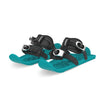

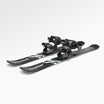



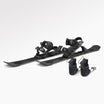








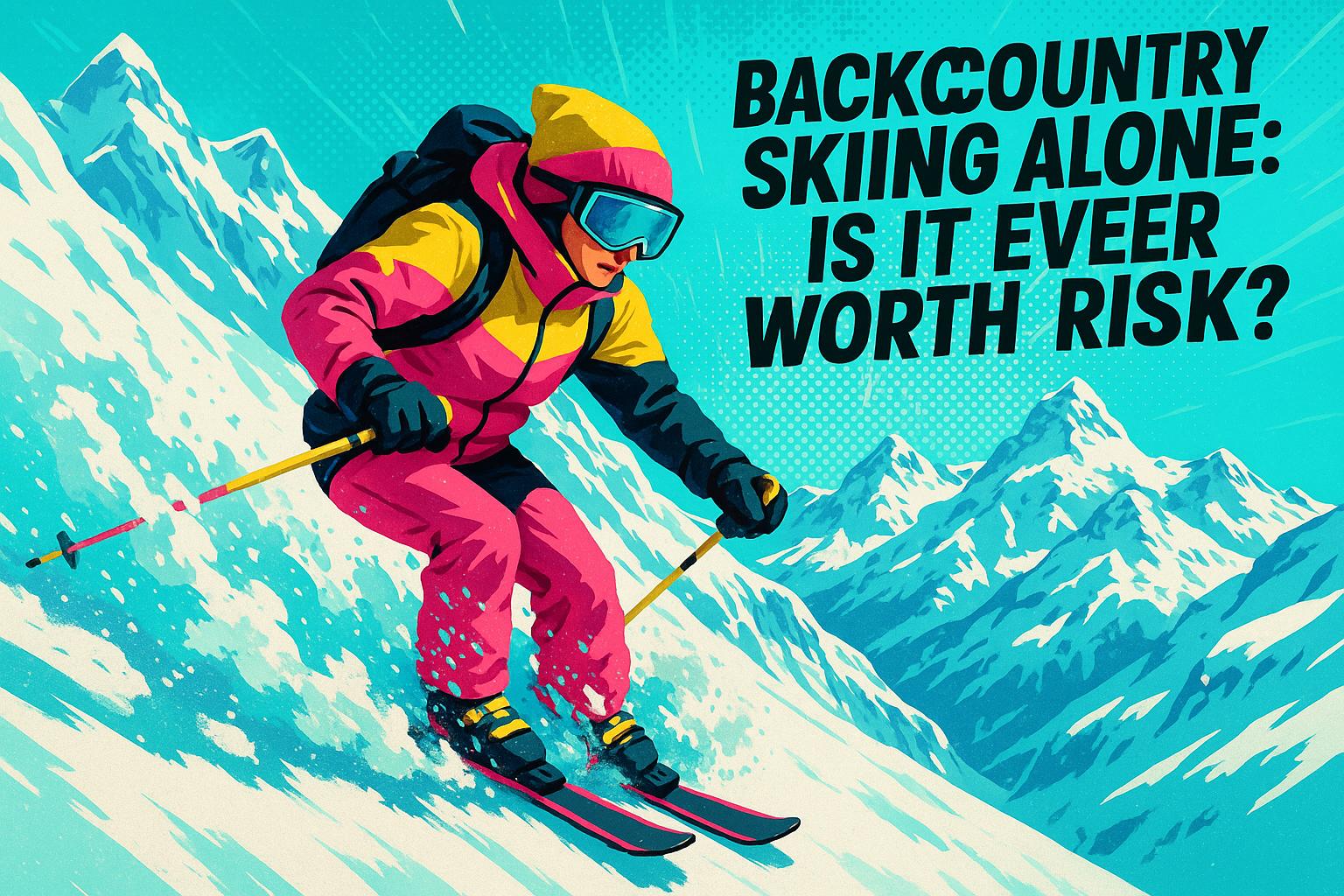

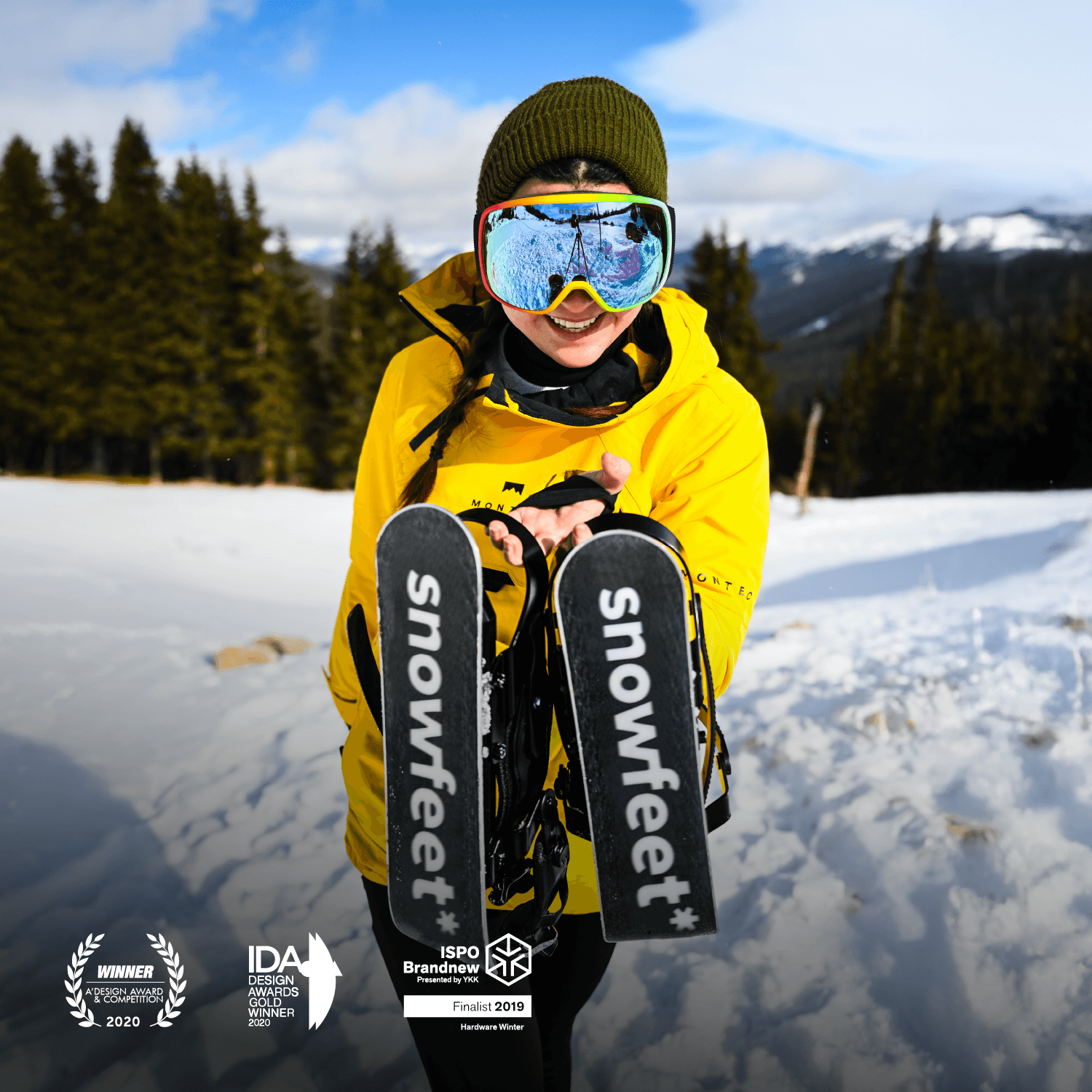

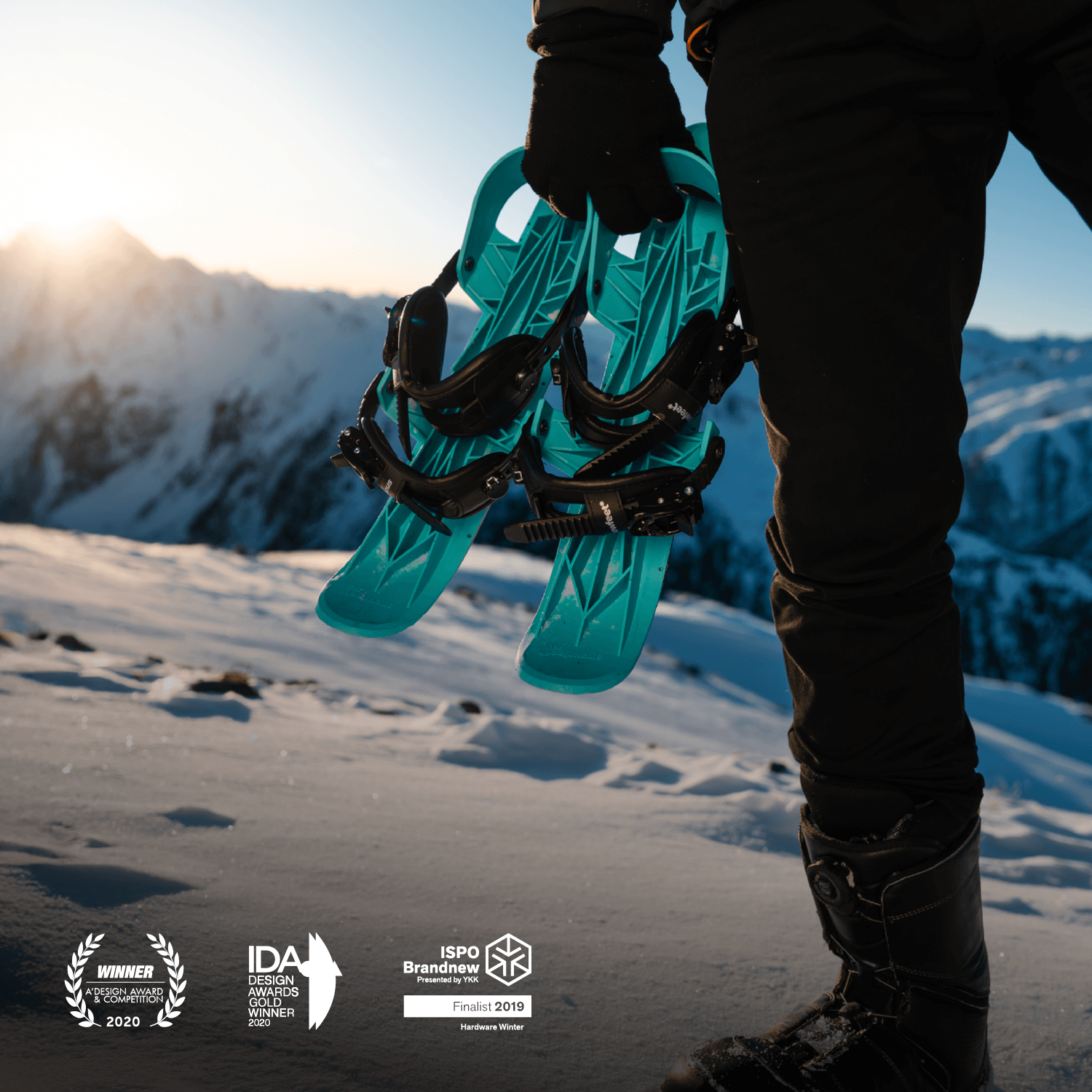
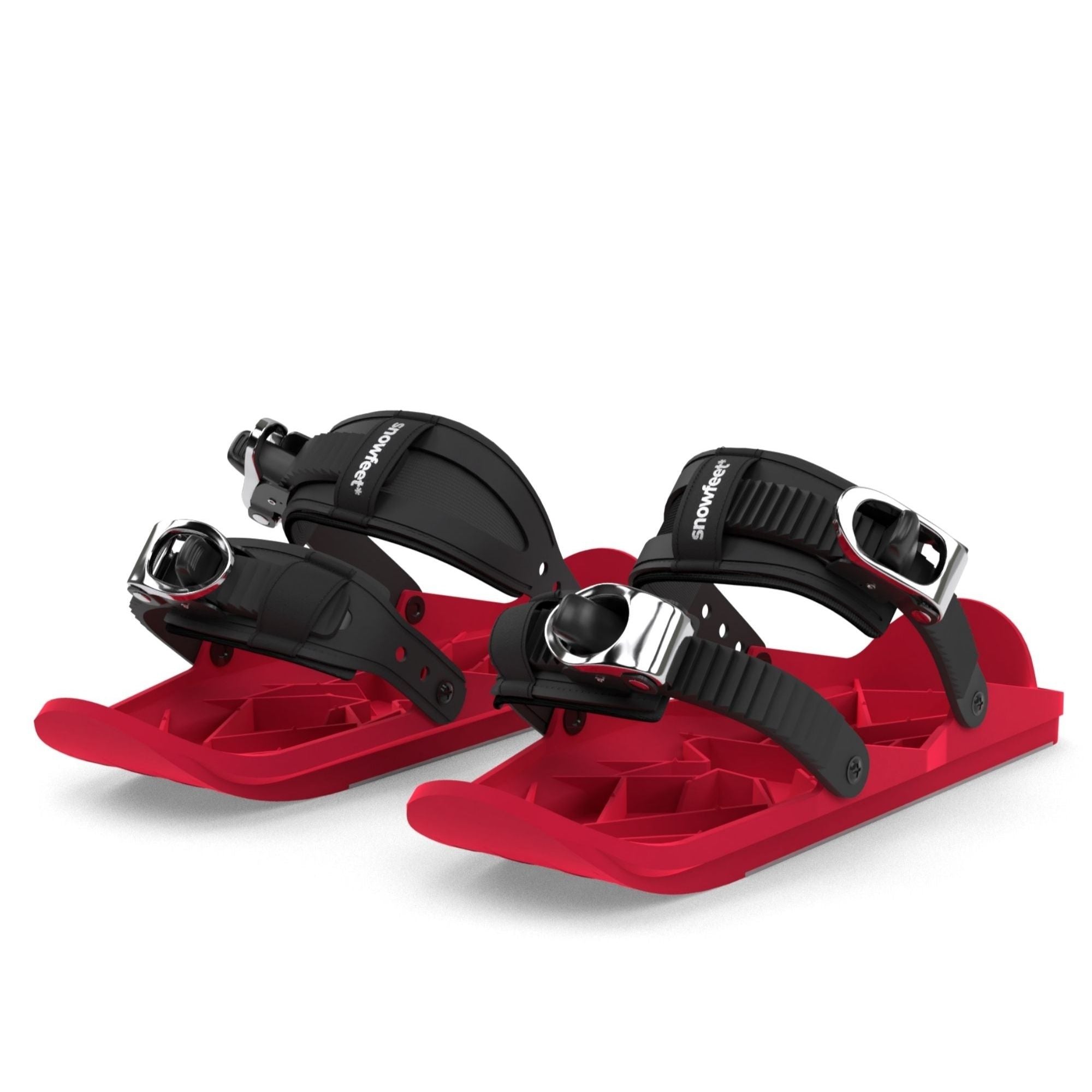



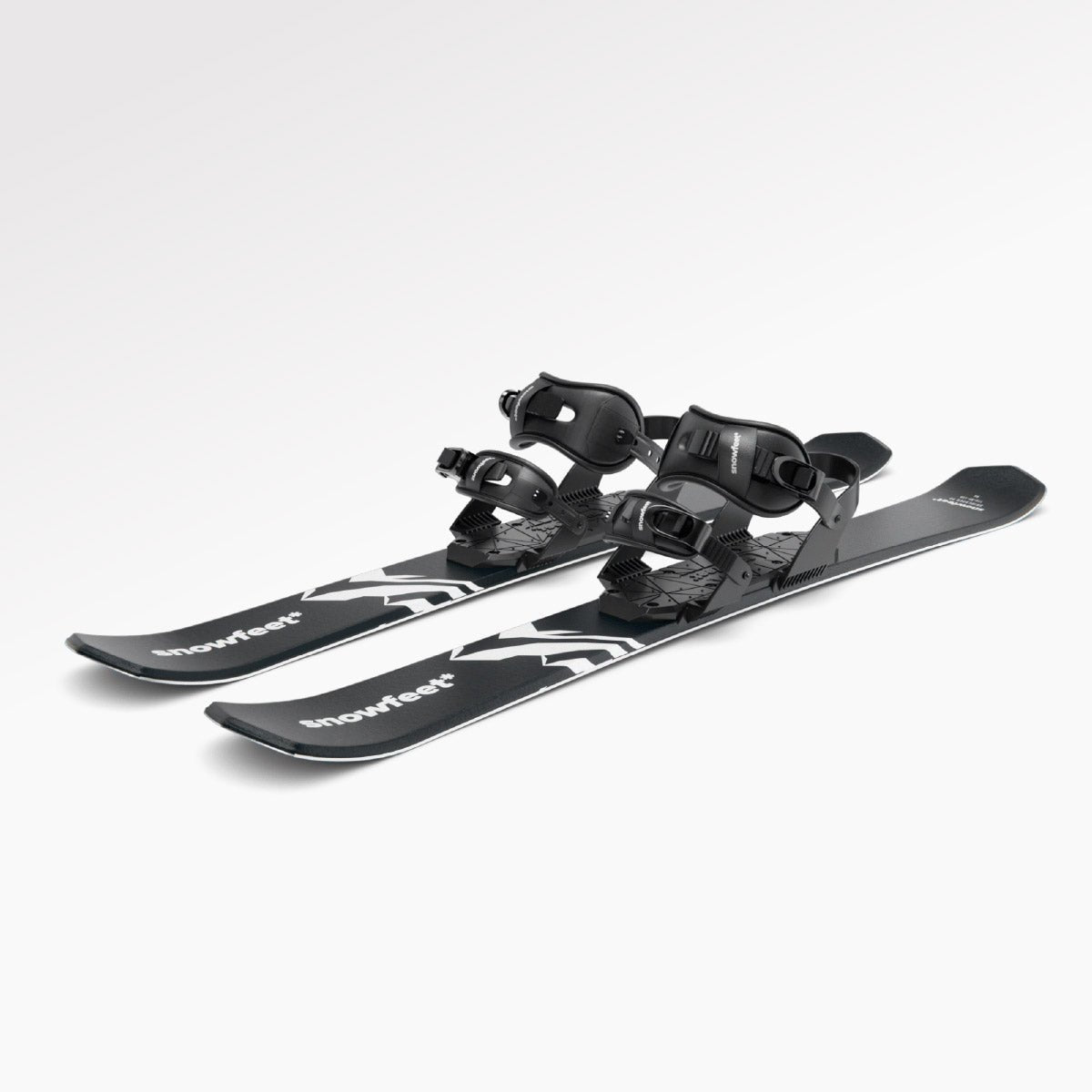
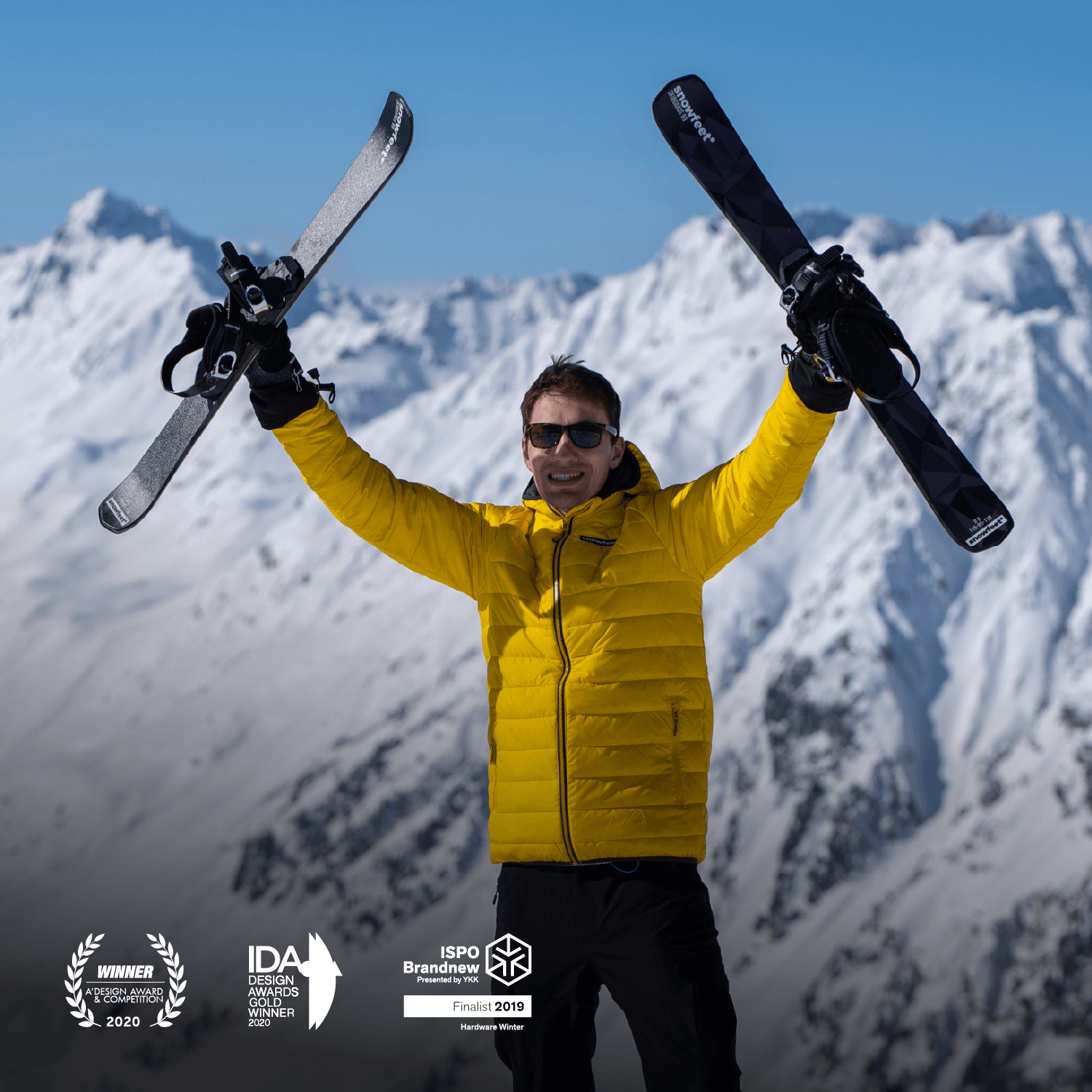
Legg igjen en kommentar
This site is protected by hCaptcha and the hCaptcha Privacy Policy and Terms of Service apply.